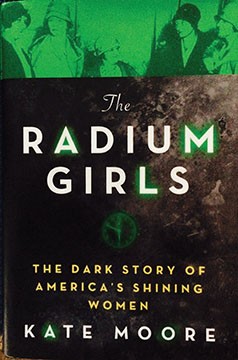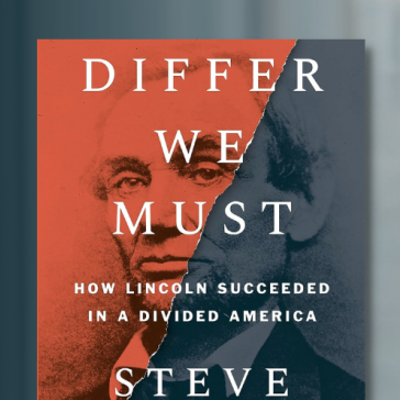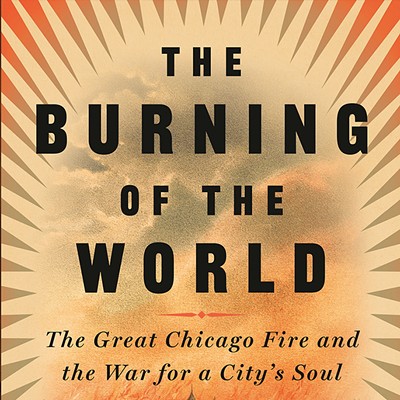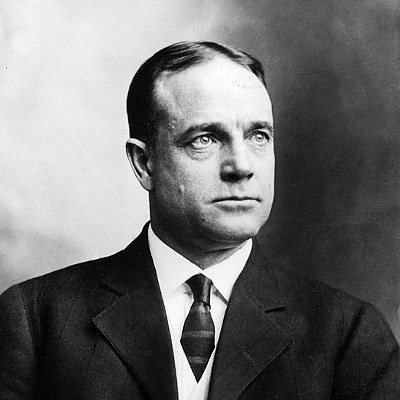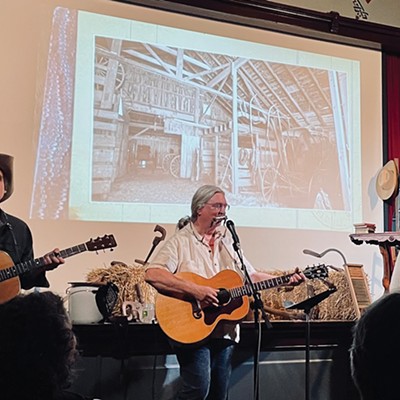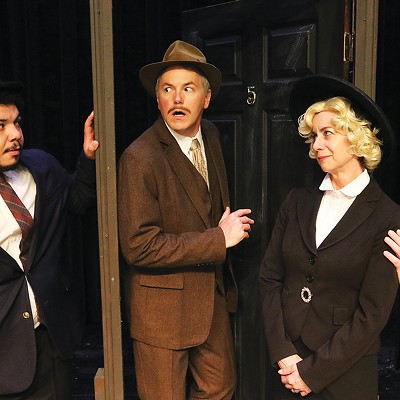Society of the Living Dead
[
{
"name": "Air - MedRect Combo - Inline Content 1",
"component": "11490391",
"insertPoint": "3",
"requiredCountToDisplay": "1",
"parentWrapperClass": "fdn-ads-inline-content-block"
},{
"name": "Air - MedRect Combo - Inline Content 2",
"component": "11490392",
"insertPoint": "7",
"requiredCountToDisplay": "5",
"parentWrapperClass": "fdn-ads-inline-content-block"
},{
"name": "Air - MedRect Combo - Inline Content 3",
"component": "11490393",
"insertPoint": "12",
"requiredCountToDisplay": "9",
"parentWrapperClass": "fdn-ads-inline-content-block"
}
]
The Radium Girls: The Dark Story of America’s Shining Women By Kate Moore, 2017, Sourcebooks, 404 pages, $26.99
Back in 2007, a group of students from Ottawa High School were invited to perform a 20-minute play, The Society of the Living Dead, at an Illinois history symposium event at Illinois State University. It was a short, memorable after-dinner performance that illuminated many of us about the fate of hundreds of factory women -- “Radium Girls” –who worked in LaSalle County in the decades after World War I, and left us wondering why we had not heard their story before. We can only thank the students, their teachers, and the good folks who put on Illinois history fairs for sharing the forgotten lessons of our past. Truth be told, the powers responsible for the crimes against these unfortunate women did their best to bury the story and leave us in the dark.
But now we have The Radium Girls: The Dark Story of America’s Shining Women, by Kate Moore, a compelling narrative and community history about this industrial tragedy, which pitted hundreds if not thousands of young hopeful women against a merciless employer unwilling to admit that its product, radium-based paint, was slowly and painfully killing them. Moore, who lives in London, found this story so compelling that she came to the States, searched newspaper archives, interviewed the families of victims and survivors, and hung out around toxic waste sites to get the facts right.
The story begins a few years after World War I in two communities hundreds of miles apart – Orange, New Jersey, and Ottawa, Illinois, when the U.S. Radium Corporation (USRC) opened plants in those cities and began hiring young women to paint the dials of their clocks with a radium-based paint. The jobs were good, with clean working environments and a handsome payday for those who worked efficiently. The girls who were hired encouraged their friends to apply, and soon the dial paint shops were like extended families, with company picnics and outings that encouraged camaraderie. All the women had to do was Lip, Dip, and Paint all day. The radium power in their paint cups got all over everything, including on the fingernails, in their hair, and in the mouths, eyes, ears and nose, and after a while it became a source of amusement to go into a dark room to see themselves glow. No one ever told them it was dangerous; in fact, radium at the time was touted by their employers as being a miracle compound with no adverse side effects.
But simultaneously, the women who painted those luminous dials 1,000 miles apart began to get sick. Their joints ached, their teeth began falling out, their jawbones crumbled inside their mouths. Some even developed tumors, sarcomas the size of golf balls and then the size of grapefruits. But the company doctors did everything they could to disguise or falsify the medical reports suggesting radiation poisoning was to blame.
Kate Moore is such a good writer, such a good storyteller, that we are halfway through her narrative before we know how committed we are to hearing about these women and their families. We meet the girls from Orange and Ottawa, visit their doctors, listen to the lies from the company doctors who, despite the physical evidence, try to place the blame for their patients’ illnesses on outside forces and wanton behavior. We see their faces in old family photographs that are full of hope and expectation, and later we learn of their struggles to pay doctor and hospital bills as the Great Depression pushes them deeper into despair.
In Ottawa we watch as the townspeople turn away from the women, who have chosen to sue the USRC and the watch-dial plant for damages and unpaid medical bills; we note that none of the 44 lawyers in the city has the courage to stand up to the factory owners; we listen to a series of doctors who cannot commit to the obvious diagnosis of radium poisoning killing the factory girls, opening loopholes for the defense to drive home truckloads of doubt. We see autopsy reports falsified, poisoned body parts disappear and burials hastened to hide the facts. Finally, we meet a Chicago lawyer named Leonard Grossman, who shoves self-interest and a salary aside, and takes the Radium Girls case all the way to the Supreme Court.
That, of course, is the larger story, an honorable tale of tireless labor advocates taking on industrial giants and championing the rights of the disenfranchised. But Radium Girls is so much more. It is the story of these women, “The Society of the Living Dead,” “The Suicide Club” (as they were also known), who banded together to have their day in court, even as their labor sisters were being buried in lead-lined coffins, having their limbs amputated or slipping quietly into comas.
Moore has done her homework. She has interviewed dozens of relatives of the victims, searched corporate and medical records, visited historical collections and even entered the vaults of the Argonne National Laboratory, where many of the records related to radium poisoning are kept. Her story is riveting.
What she has delivered is brilliant, a toxic tale of American greed at the expense of youthful innocence and hope, an exposé of collusion by the professional class (lawyers, doctors, and executives) to defraud and defame a generation of women whose only crime was their desire to work for a decent wage.
But don’t think this book is a hanky wringer. You will be angry; you will want to fight. But it is also a celebration of those lives lost that made a difference, lives that changed labor laws and opened doors to new and better safety regulations in the workplace. Those are the long-term results of the longtime struggles of the radiated women who died – and still are glowing in their graves – in Illinois and New Jersey. Let them illuminate you.
William Furry is the executive director of the Illinois State Historical Society.
Back in 2007, a group of students from Ottawa High School were invited to perform a 20-minute play, The Society of the Living Dead, at an Illinois history symposium event at Illinois State University. It was a short, memorable after-dinner performance that illuminated many of us about the fate of hundreds of factory women -- “Radium Girls” –who worked in LaSalle County in the decades after World War I, and left us wondering why we had not heard their story before. We can only thank the students, their teachers, and the good folks who put on Illinois history fairs for sharing the forgotten lessons of our past. Truth be told, the powers responsible for the crimes against these unfortunate women did their best to bury the story and leave us in the dark.
But now we have The Radium Girls: The Dark Story of America’s Shining Women, by Kate Moore, a compelling narrative and community history about this industrial tragedy, which pitted hundreds if not thousands of young hopeful women against a merciless employer unwilling to admit that its product, radium-based paint, was slowly and painfully killing them. Moore, who lives in London, found this story so compelling that she came to the States, searched newspaper archives, interviewed the families of victims and survivors, and hung out around toxic waste sites to get the facts right.
The story begins a few years after World War I in two communities hundreds of miles apart – Orange, New Jersey, and Ottawa, Illinois, when the U.S. Radium Corporation (USRC) opened plants in those cities and began hiring young women to paint the dials of their clocks with a radium-based paint. The jobs were good, with clean working environments and a handsome payday for those who worked efficiently. The girls who were hired encouraged their friends to apply, and soon the dial paint shops were like extended families, with company picnics and outings that encouraged camaraderie. All the women had to do was Lip, Dip, and Paint all day. The radium power in their paint cups got all over everything, including on the fingernails, in their hair, and in the mouths, eyes, ears and nose, and after a while it became a source of amusement to go into a dark room to see themselves glow. No one ever told them it was dangerous; in fact, radium at the time was touted by their employers as being a miracle compound with no adverse side effects.
But simultaneously, the women who painted those luminous dials 1,000 miles apart began to get sick. Their joints ached, their teeth began falling out, their jawbones crumbled inside their mouths. Some even developed tumors, sarcomas the size of golf balls and then the size of grapefruits. But the company doctors did everything they could to disguise or falsify the medical reports suggesting radiation poisoning was to blame.
Kate Moore is such a good writer, such a good storyteller, that we are halfway through her narrative before we know how committed we are to hearing about these women and their families. We meet the girls from Orange and Ottawa, visit their doctors, listen to the lies from the company doctors who, despite the physical evidence, try to place the blame for their patients’ illnesses on outside forces and wanton behavior. We see their faces in old family photographs that are full of hope and expectation, and later we learn of their struggles to pay doctor and hospital bills as the Great Depression pushes them deeper into despair.
In Ottawa we watch as the townspeople turn away from the women, who have chosen to sue the USRC and the watch-dial plant for damages and unpaid medical bills; we note that none of the 44 lawyers in the city has the courage to stand up to the factory owners; we listen to a series of doctors who cannot commit to the obvious diagnosis of radium poisoning killing the factory girls, opening loopholes for the defense to drive home truckloads of doubt. We see autopsy reports falsified, poisoned body parts disappear and burials hastened to hide the facts. Finally, we meet a Chicago lawyer named Leonard Grossman, who shoves self-interest and a salary aside, and takes the Radium Girls case all the way to the Supreme Court.
That, of course, is the larger story, an honorable tale of tireless labor advocates taking on industrial giants and championing the rights of the disenfranchised. But Radium Girls is so much more. It is the story of these women, “The Society of the Living Dead,” “The Suicide Club” (as they were also known), who banded together to have their day in court, even as their labor sisters were being buried in lead-lined coffins, having their limbs amputated or slipping quietly into comas.
Moore has done her homework. She has interviewed dozens of relatives of the victims, searched corporate and medical records, visited historical collections and even entered the vaults of the Argonne National Laboratory, where many of the records related to radium poisoning are kept. Her story is riveting.
What she has delivered is brilliant, a toxic tale of American greed at the expense of youthful innocence and hope, an exposé of collusion by the professional class (lawyers, doctors, and executives) to defraud and defame a generation of women whose only crime was their desire to work for a decent wage.
But don’t think this book is a hanky wringer. You will be angry; you will want to fight. But it is also a celebration of those lives lost that made a difference, lives that changed labor laws and opened doors to new and better safety regulations in the workplace. Those are the long-term results of the longtime struggles of the radiated women who died – and still are glowing in their graves – in Illinois and New Jersey. Let them illuminate you.
William Furry is the executive director of the Illinois State Historical Society.
Illinois Times has provided readers with independent journalism for almost 50 years, from news and politics to arts and culture.
Your support will help cover the costs of editorial content published each week. Without local news organizations, we would be less informed about the issues that affect our community..
Got something to say?
Send a letter to the editor and we'll publish your feedback in print!

